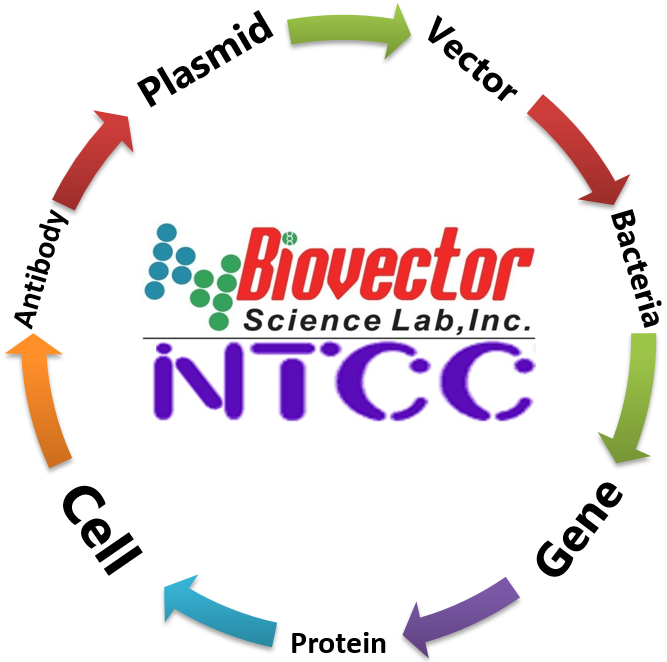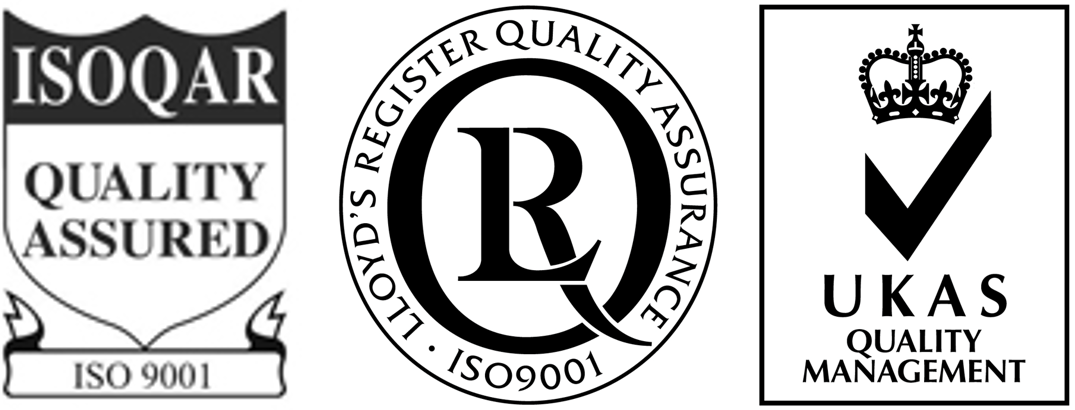CHO-K1 cell line细胞株 BioVector NTCC质粒载体菌种细胞基因保藏中心
- 价 格:¥9832
- 货 号:CHO-K1 cell line细胞株
- 产 地:北京
- BioVector NTCC典型培养物保藏中心
- 联系人:Dr.Xu, Biovector NTCC Inc.
电话:400-800-2947 工作QQ:1843439339 (微信同号)
邮件:Biovector@163.com
手机:18901268599
地址:北京
- 已注册
CHO-K1 cell line细胞株 BioVector NTCC质粒载体菌种细胞基因保藏中心 CHO-K1 cell line
Organism: Cricetulus griseus, hamster, Chinese / Tissue: ovary /
Cat No.: NTCC59CCL61
Organism Cricetulus griseus, hamster, Chinese
Tissue ovary
Product Format frozen
Morphology epithelial-like
Culture Properties adherent
Biosafety Level 1
Gender female
Applications This cell line is suitable as a transfection host.
Karyotype Chromosome Frequency Distribution 50 Cells: 2n = 22. Stemline number is hypodiploid.
Derivation The CHO-K1 cell line was derived as a subclone from the parental CHO cell line initiated from a biopsy of an ovary of an adult Chinese hamster by T. T. Puck in 1957.
Clinical Data female
Virus Susceptibility Vesicular stomatitis, Orsay (Indiana)
Vesicular stomatitis, Glasgow (Indiana)
Getah virus
Virus Resistance poliovirus 2; modoc virus; Button Willow virus
Comments The cells require proline in the medium for growth.
Complete Growth Medium The base medium for this cell line is F-12K Medium. To make the complete growth medium, add the following components to the base medium: fetal bovine serum to a final concentration of 10%.
Subculturing Volumes are given for a 75 cm2 flask. Increase or decrease the amount of dissociation medium needed proportionally for culture vessels of other sizes. Corning® T-75 flasks are recommended for subculturing this product.
1. Remove and discard culture medium.
2. Briefly rinse the cell layer with 0.25% (w/v) Trypsin- 0.53 mM EDTA solution to remove all traces of serum which contains trypsin inhibitor.
3. Add 2.0 to 3.0 mL of Trypsin-EDTA solution to flask and observe cells under an inverted microscope until cell layer is dispersed (usually within 5 to 15 minutes).
Note: To avoid clumping do not agitate the cells by hitting or shaking the flask while waiting for the cells to detach. Cells that are difficult to detach may be placed at 37°C to facilitate dispersal.
4. Add 6.0 to 8.0 mL of complete growth medium and aspirate cells by gently pipetting.
5. Add appropriate aliquots of the cell suspension to new culture vessels.
6. Incubate cultures at 37°C.
Subcultivation Ratio: A subcultivation ratio of 1:4 to 1:8 is recommended
Medium Renewal: Once or twice between subculture
Cryopreservation Freeze medium: Complete growth medium 95%; DMSO, 5%
Storage temperature: liquid nitrogen vapor phase
Culture Conditions Temperature: 37°C
Year of Origin 1957
References Puck TT, et al. Genetics of somatic mammalian cells III. Long-term cultivation of euploid cells from human and animal subjects. J. Exp. Med. 108: 945-956, 1958. PubMed: 13598821
Ham RG. Clonal growth of mammalian cells in a chemically defined, synthetic medium. Proc. Natl. Acad. Sci. USA 53: 288-293, 1965. PubMed: 14294058
Kao FT, Puck TT. Genetics of somatic mammalian cells, VII. Induction and isolation of nutritional mutants in Chinese hamster cells. Proc. Natl. Acad. Sci. USA 60: 1275-1281, 1968. PubMed:5244736
Kao FT, et al. Complementation analysis on virus-fused Chinese hamster cells with nutritional markers. Science 164: 312-314, 1969. PubMed: 5813351
Kao F, et al. Genetics of somatic mammalian cells. X. Complementation analysis of glycine-requiring mutants. Proc. Natl. Acad. Sci. USA 64: 1284-1291, 1969. PubMed: 5271752
Mayr GA, Freimuth P. A single locus on human chromosome 21 directs the expression of a receptor for adenovirus type 2 in mouse A9 cells. J. Virol. 71: 412-418, 1997. PubMed: 8985365
Hoppe HC, et al. Identification of phosphatidylinositol mannoside as a mycobacterial adhesin mediating both direct and opsonic binding to nonphagocytic mammalian cells. Infect. Immun. 65: 3896-3905, 1997. PubMed: 9284169
Aragon V, et al. Effect of cytolethal distending toxin on F-actin assembly and cell division in Chinese hamster ovary cells. Infect. Immun. 65: 3774-3780, 1997. PubMed: 9284151
Yang TT, et al. Quantification of gene expression with a secreted alkaline phosphatase reporter system. BioTechniques 23: 1110-1114, 1997. PubMed: 9421645
St. Geme JW, et al. Characterization of the genetic locus encoding Haemophilus influenzae type b surface fibrils. J. Bacteriol. 178: 6281-6287, 1996. PubMed: 8892830
Goodrum FD, et al. Adenovirus early region 4 34-kilodalton protein directs the nuclear localization of the early region 1B 55-kilodalton protein in primate cells. J. Virol. 70: 6323-6335, 1996. PubMed:8709260
Siess DC, et al. Exceptional fusogenicity of chinese hamster ovary cells with murine retrovirus suggests roles for cellular factor(s) and receptor clusters in the membrane fusion process. J. Virol. 70: 3432-439, 1996. PubMed: 8648675
Wang H, et al. Modulation of ecotropic murine retrovirus by N-linked glycosylation of the cell surface receptor/amino acid transporter. J. Virol. 70: 6884-6891, 1996. PubMed: 8794331
Nohturfft A, et al. Recurrent G-to-A substitution in a single codon of SREBP cleavage-activating protein causes sterol resistance in three mutant chinese hamster ovary cell lines. Proc. Natl. Acad. Sci. USA 93: 13709-13714, 1996. PubMed: 8942999
Blanke SR, et al. Fused polycationic peptide mediates delivery on diphtheria toxin A chain to the cytosol in the presence of anthrax protective antigen. Proc. Natl. Acad. Sci. USA 93: 8437-8442, 1996. PubMed: 8710889
Ozcelebi F, et al. Phosphorylation of cholecystokinin receptors expressed on chinese hamster ovary cells. J. Biol. Chem. 271: 3750-3755, 1996. PubMed: 8631990
Hawes BE, et al. Phosphatidylinositol 3-kinase is an early intermediate in the G beta gamma-mediated mitogen-activated protein kinase signaling pathway. J. Biol. Chem. 271: 12133-12136, 1996. PubMed: 8647803
Parker A, et al. Identification of the extracellular matrix binding sites for insulin-like growth factor-binding protein 5. J. Biol. Chem. 271: 13523-13529, 1996. PubMed: 8662813
Beving DE, et al. Oral immunization with a recombinant cysteine-rich section of the Entamoeba histolytica galactose-inhibitable lectin elicits an intestinal secretory immunoglobulin A response that has in vitro adherence inhibition activity. Infect. Immun. 64: 1473-1476, 1996. PubMed: 8606122
Holtmann MH, et al. Role of receptor phosphorylation in desensitization and internalization of the secretin receptor. J. Biol. Chem. 271: 23566-23571, 1996. PubMed: 8798566
Lugemwa FN, et al. Unusual beta-D-xylosides that prime glycosaminoglycans in animal cells. J. Biol. Chem. 271: 19159-19165, 1996. PubMed: 8702593
Cross References Nucleotide (GenBank) : U06143 Cricetulus griseus ATCC CCL61 sialidase mRNA, complete cds.
Nucleotide (GenBank) : U20436 Cricetulus griseus furin endoprotease (fur) mRNA, complete cds.
Nucleotide (GenBank) : M87540 Cricetulus longicaudatus sodium channel alpha subunit mRNA, partial cds.
Nucleotide (GenBank) : M87541 Cricetulus longicaudatus sodium channel alpha subunit mRNA, partial cds.
Nucleotide (GenBank) : L13244 Cricetulus griseus CTP:phosphocholine cytidylyltransferase mRNA, complete cds.
Nucleotide (GenBank) : L18986 Cricetulus griseus lysosomal membrane glycoprotein A (lgpA) mRNA, complete cds.
Nucleotide (GenBank) : L19357 Cricetulus griseus lysosomal membrane glycoprotein B (lgpB) mRNA, complete cds.
Nucleotide (GenBank) : AF043911 Cricetulus griseus telomeric repeat binding factor 1 (TRF1) mRNA, partial cds.
Nucleotide (GenBank) : U20435 Cricetulus griseus clone dsi alternatively spliced truncated furin endoprotease (fur) mRNA, complete cds.
Nucleotide (GenBank) : U20434 Cricetulus griseus clone dsii alternatively spliced truncated furin endoprotease (fur) mRNA, complete cds.
[Supplier来源] http://www.biovector.net
您正在向 biovector.net 发送关于产品 CHO-K1 cell line细胞株 BioVector NTCC质粒载体菌种细胞基因保藏中心 的询问
- 公告/新闻




